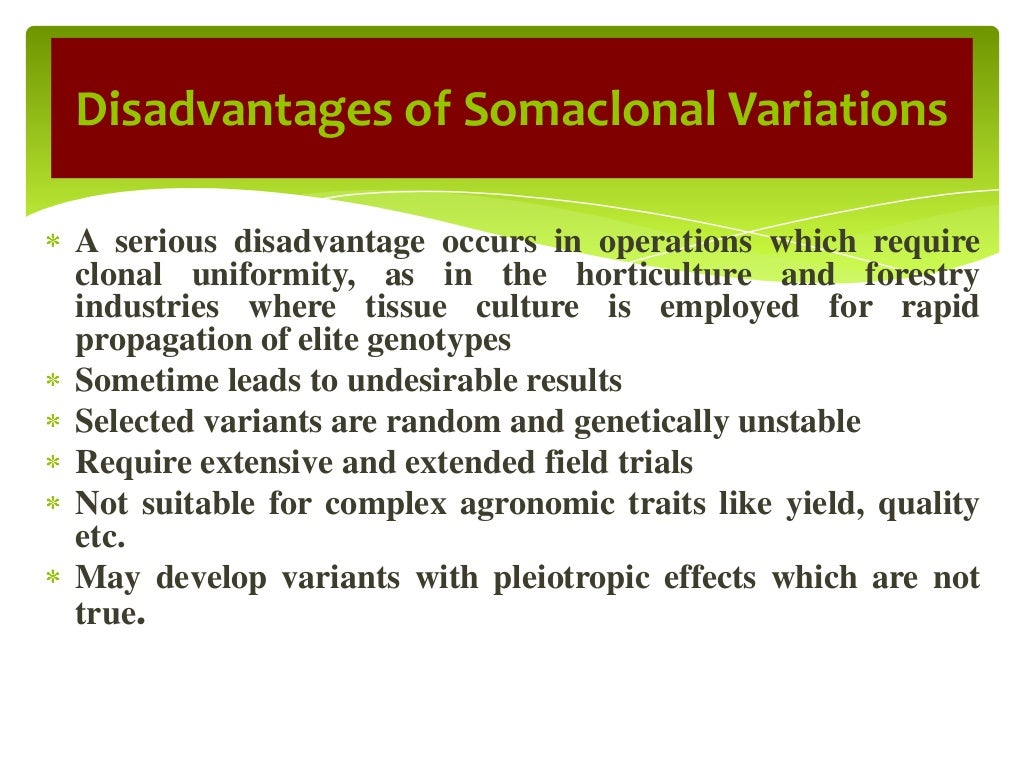
. Part of the book series (PSBA, volume 32) Abstract Somaclonal variation refers to the variation arising in cell cultures, regenerated plants and their progenies, and this general term was given by Larkin and Scowcroft (1981). However, other types of variation arise by specific culture of cells or tissues, which include culture of: protoplasts (protoclonal); anthers and microspores (gametoclonal); callus (calliclonal); apical meristem (mericlonal); leaf, stem, root or other somatic tissues (somaclonal). There are different approaches to create somaclonal variation, which include: (1) growth of callus or cell suspension cultures for several cycles; (2) regeneration of a large number of plants from such long-term cultures; (3) screening for desirable traits in the regenerated plants and their progenies, e.g. In-vitro selection to select agronomically desirable somaclones for tolerance to various biotic and abiotic stresses using toxic levels of pathotoxins, herbicides, salts, etc.; (4) testing of selected variants in subsequent generations for desired traits; and (5) multiplication of stable variants to develop new breeding lines.
Somaclonal Variation Ppt Download For Mac Mac
Genetic variations in plants that have been produced by plant tissue culture and can be. Steps involved in induction and selection of Somaclonal Variations. The extent to which somaclonal variation is generated by genetic and epigenetic changes remains the subject of much research. Whilst there is clear evidence for genetic changes being important, from point mutations to cytological aberrations such as polyploidy [4 x Somaclonal variation – genetic basis and breeding applications.